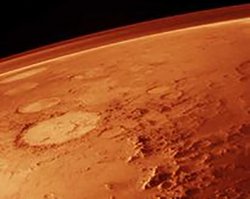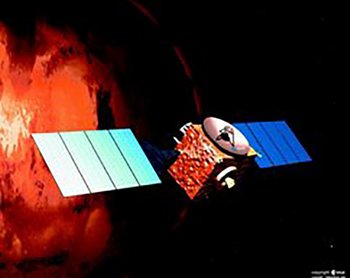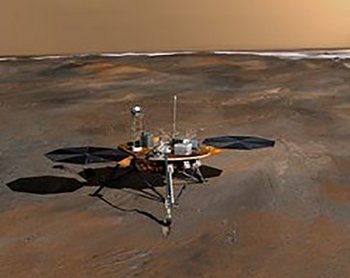The Mars Simulation Laboratory is an interdisciplinary research collaboration of biologists, chemists, geologists and physicists who work together on joint research related to the planet Mars. The group has built its own research facilities and has access to all necessary facilities under the Faculty of Natural Sciences. Furthermore, some group members have developed instruments for Mars missions.
The focus of the Mars Simulation Laboratory is the study of processes related to the surface of Mars.
This can be done from Earth or satellites in Earth orbit or, more detailed, from Martian satellites as imaging or spectroscopic data. However, the most detailed data are collected by Martian landers and rovers on the surface. And though we have not yet samples returned by Mars missions, we have today, out of the more than 70.000 meteorites found on Earth, 277 (2020) that are classified as originating from Mars. Apart from utilizing satellite data and data from landers, rovers and meteorites, the Mars Simulation Laboratory studies processes relevant for Mars, by means of analogue samples (rock/soil, dust, pure minerals and microbiology). The equipment used are wind tunnels, tumbling carousels that mimics saltation processes and a chamber for microbiological experiments under Martian environmental conditions. The mars group also has access to a large number of spectroscopic and image analytical facilities to study the processes and their outcome.
The background for the study of Mars can be expressed in four scientific goals shared by ESA and NASA and valid also for the Danish Mars group:
Goal 1: Determine whether life ever existed on Mars
Goal 2: Characterize the Climate of Mars
Goal 3: Characterize the Geology of Mars
Goal 4: Prepare for Human Exploration

The Mars Laboratory has been recognized as one of ESA's Mars Express Collaboration Laboratories. We have developed instruments proposed for participation in ESA’s ExoMars mission under the ESA, GSTP programme. The instrument “Telltale”, a wind sensor, was developed by Mars group members and mounted on top of the climate mast on the NASA Phoenix Mars lander. It collected a detailed set of wind data, which was interpreted by the Mars group members.

